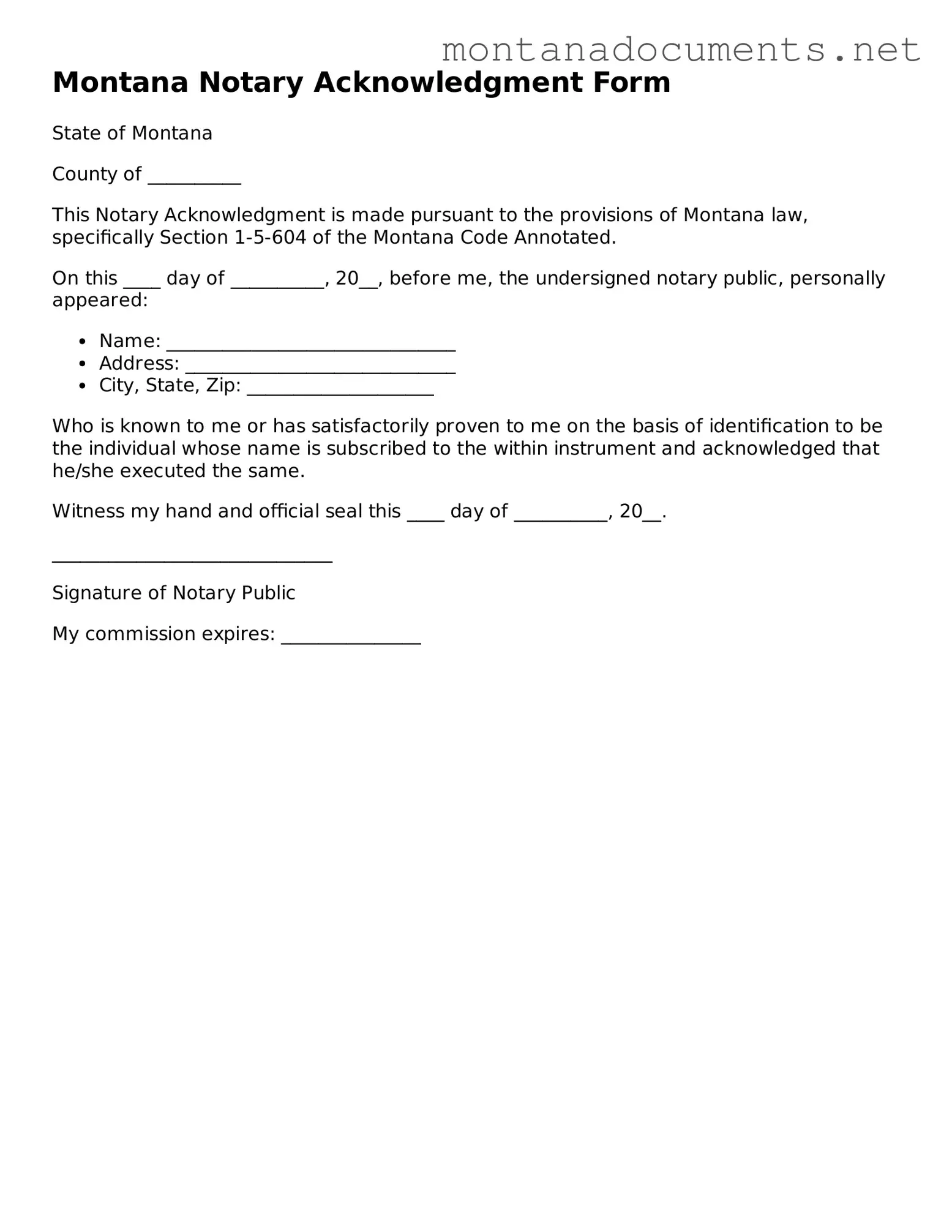The Montana Notary Acknowledgment form shares similarities with the Affidavit form. Both documents require the signer to affirm the truthfulness of the information contained within them. In an Affidavit, the individual makes a sworn statement, typically under oath, which a notary public can then acknowledge. This process ensures that the information is credible and can be relied upon in legal matters. The key difference lies in the purpose; while an acknowledgment merely verifies the identity of the signer and their intent to sign, an affidavit serves as a formal declaration of facts.
Another document that resembles the Montana Notary Acknowledgment is the Power of Attorney (POA). A Power of Attorney allows one person to act on behalf of another in legal or financial matters. Like the acknowledgment form, the POA must be signed in the presence of a notary public, who verifies the identity of the principal and their willingness to grant authority. This ensures that the document is executed properly, preventing potential disputes regarding the principal's intent.
If you're looking for a reliable way to document a vehicle transaction, consider using an essential form for your RV Bill of Sale needs, which you can find at essential form for RV Bill of Sale. This form simplifies the process of transferring ownership while ensuring compliance with legal requirements.
The Deed form also shares characteristics with the Montana Notary Acknowledgment. When transferring property, a Deed must be signed by the property owner and notarized to confirm that the signature is genuine. The notary’s role is crucial in preventing fraud and ensuring that the transaction is valid. Both documents require the notary to confirm the identity of the signer and their understanding of the document's implications.
Similar to the Notary Acknowledgment, the Bill of Sale requires notarization to validate the transfer of ownership of personal property. This document serves as proof of the transaction between the buyer and seller. Notarization adds an extra layer of security, confirming that both parties are who they claim to be and that the sale was conducted fairly. In both cases, the notary's acknowledgment of the signatures helps protect against disputes later on.
The Jurat is another document that parallels the Montana Notary Acknowledgment. A Jurat is used when an individual must swear or affirm the truth of the contents of a document. The notary public witnesses the signing and then provides their acknowledgment. While both documents involve the notary verifying identities, the Jurat emphasizes the requirement of an oath, whereas the acknowledgment focuses on the act of signing itself.
Lastly, the Certification of Trust is akin to the Montana Notary Acknowledgment in that both require notarization to verify authenticity. A Certification of Trust is a document that outlines the details of a trust and confirms the authority of the trustee. By notarizing this document, the notary ensures that the information is accurate and that the trustee has the legal right to act on behalf of the trust. This helps to prevent any misunderstandings regarding the trust's legitimacy and the trustee's authority.
